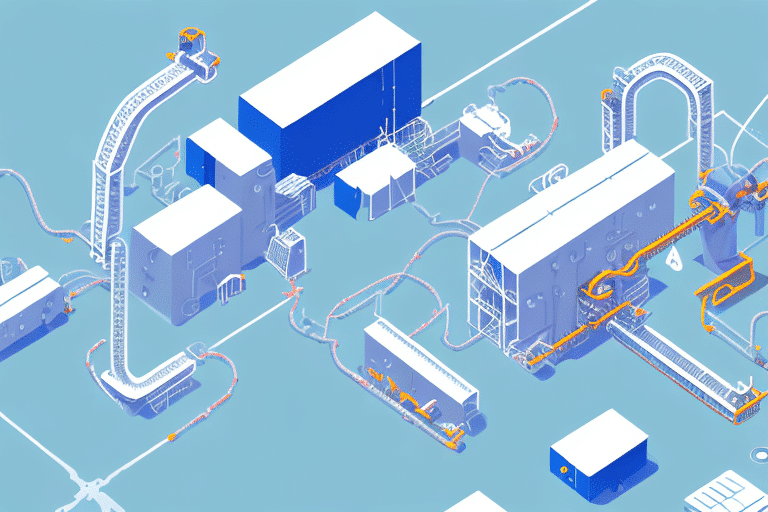Assess and Analyze Current Operations
The foundation of streamlining operations lies in thoroughly assessing and analyzing your current business processes. By understanding where inefficiencies exist, you can implement targeted strategies to enhance productivity and efficiency.
Evaluate Your Current Processes
Begin by mapping out each workflow within your organization. Identify stages that cause delays or are prone to errors. Tools like process mapping can help visualize workflows and pinpoint bottlenecks.
Gather Employee Feedback
Your employees are on the front lines and can provide invaluable insights into operational challenges. Conduct surveys or hold brainstorming sessions to collect their ideas on potential improvements.
Utilize Data and Analytics
Leverage data analytics to gain a deeper understanding of your operations. Tools such as Tableau or Power BI can help in analyzing performance metrics and identifying trends that need attention.
Identify and Eliminate Inefficient Processes
Once you've assessed your current operations, the next step is to identify and eliminate inefficiencies that hinder productivity.
Streamline Workflows
Remove redundant steps in your processes. For example, if multiple approvals are causing delays, consider consolidating the approval stages to speed up decision-making.
Implement Automation
Automation can significantly reduce the time spent on repetitive tasks. Tools like Zapier can automate workflows between different applications, enhancing efficiency.
Avoid Common Pitfalls
Ensure that you involve your team in the streamlining process to avoid resistance and oversight. Additionally, keep the changes simple to prevent unnecessary complexity.
Automate and Implement Technology Solutions
Embracing automation and the right technological tools can transform your operations, making them more efficient and less error-prone.
Automate Repetitive Tasks
Automation frees up your team to focus on more strategic activities. Implementing tools like Asana for project management or HubSpot for marketing automation can streamline various aspects of your business.
Invest in Advanced Technology
Adopt cutting-edge technologies such as artificial intelligence (AI) and machine learning to enhance data processing and decision-making. According to a McKinsey report, AI can boost productivity by up to 40% in certain sectors.
Leverage Cloud-Based Solutions
Cloud technologies offer scalability and accessibility, enabling your team to collaborate effectively from any location. Platforms like Microsoft 365 and Google Workspace are excellent options for enhancing collaboration and data management.
Adopt a Lean Operations Strategy
A lean operations strategy focuses on minimizing waste while maximizing value, leading to significant improvements in productivity.
Reduce Waste
Identify and eliminate non-value-adding activities in your processes. This could involve minimizing excess inventory, reducing unnecessary transportation steps, or eliminating defects in production.
Enhance Quality
Implement quality control measures to ensure that each step in your process contributes to a superior final product. Techniques like Kaizen can foster continuous improvement.
Promote a Culture of Efficiency
Encourage employees to adopt lean principles by providing training and incentives for identifying and solving inefficiencies. A Harvard Business Review article highlights the importance of leadership in cultivating a lean culture.
Optimize Your Supply Chain
An optimized supply chain ensures that your operations run smoothly, reducing costs and improving overall efficiency.
Implement Just-In-Time Inventory
A Just-In-Time (JIT) inventory system minimizes storage costs and reduces waste by receiving goods only when they are needed. This approach can lead to significant cost savings and improved cash flow.
Enhance Supplier Relationships
Collaborate closely with your suppliers to ensure timely deliveries and high-quality materials. Building strong partnerships can lead to better pricing and more reliable supply chains.
Utilize Supply Chain Management Software
Adopt software solutions like SAP SCM or Oracle SCM to gain real-time visibility into your supply chain, facilitating better decision-making and quicker responses to disruptions.
Enhance Communication and Foster a Culture of Continuous Improvement
Effective communication and a culture that embraces continuous improvement are crucial for sustaining streamlined operations.
Improve Internal Communication Channels
Implement communication tools such as Slack or Zoom to facilitate seamless communication among team members, especially in remote or hybrid work environments.
Encourage Regular Feedback
Establish regular check-ins and feedback loops to ensure that everyone is aligned with the company's goals and to address any emerging issues promptly.
Promote a Continuous Improvement Mindset
Foster an environment where employees are encouraged to suggest improvements. Recognize and reward innovative ideas that contribute to operational efficiency.
Measure and Evaluate Success
Tracking the effectiveness of your streamlining efforts is essential to ensure that your strategies are yielding the desired results.
Define Key Performance Indicators (KPIs)
Identify KPIs that align with your business objectives, such as productivity rates, lead times, and customer satisfaction scores. According to a Bain & Company report, well-defined KPIs are critical for monitoring progress and making informed decisions.
Conduct Regular Audits
Perform periodic audits of your processes to identify new areas for improvement and to ensure that existing strategies remain effective.
Analyze and Adjust Strategies
Use the data collected from your KPIs and audits to refine your strategies. Be prepared to make adjustments as needed to continuously enhance efficiency.
Learn from Success Stories
Studying case studies of companies that have successfully streamlined their operations can provide valuable insights and inspiration.
Review Industry Case Studies
Examine how leading companies have implemented streamlining strategies. For instance, Toyota's lean manufacturing approach is a classic example of successful operational efficiency.
Adapt Strategies to Your Business
While learning from others, tailor the strategies to fit your unique business needs and objectives. What works for one company may need adjustments to be effective in a different context.
Measure the Impact
After implementing new strategies inspired by case studies, measure their impact using your defined KPIs to ensure they are delivering the expected benefits.
Conclusion
Streamlining your operations is a multifaceted process that requires careful assessment, strategic planning, and continuous improvement. By evaluating your current processes, eliminating inefficiencies, adopting the right technologies, and fostering a culture of efficiency, you can significantly enhance your business productivity and achieve sustainable growth. Begin by taking a comprehensive look at your operations and implementing these strategies to set your business on the path to greater efficiency and success.




















